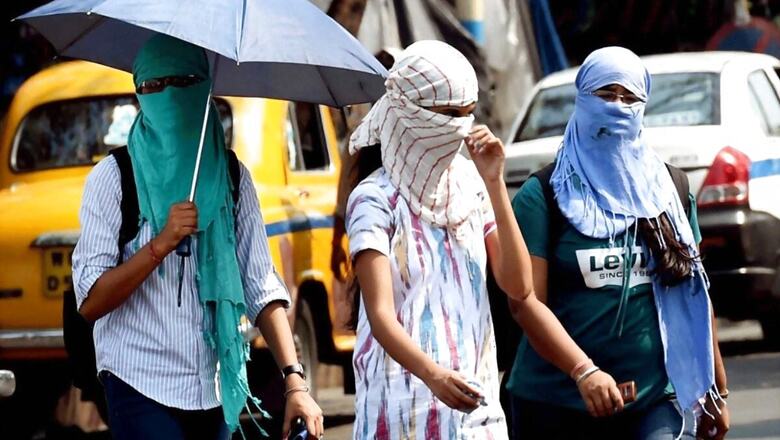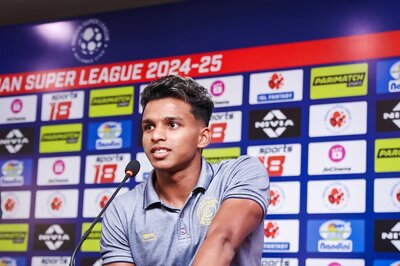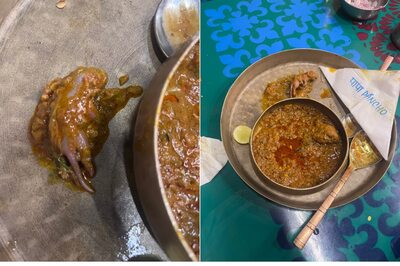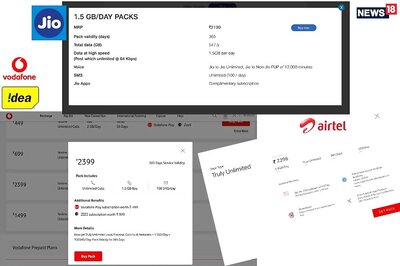
views
Recording year’s highest temperature, a severe heatwave swept the national capital on Wednesday, with the India Meteorological Department (IMD) predicting similar conditions on Thursday as well. The mercury in Delhi settled at 43.5 degrees Celsius, even as the IMD said there may not be any respite soon as the monsoon is at least a week away.
The second this year after March 29, a heatwave has been predicted in the capital in July — an unusual weather for the city as the phenomenon is mostly witnessed till mid-June. According to a report in Times of India, there may be slight relief from July 2 onwards with the possibility of rain in parts of Delhi. However, the monsoon was unlikely to reach the city in the next five days, the IMD was quoted as saying.
“Temperature is expected to be 42-43 degrees Celsius in NCR today. There will be strong winds. We can expect light rain on 2nd-3rd July and the temperature is expected to come down to 38 degrees Celsius,” said Kuldeep Srivastava, Regional Head, IMD Delhi.
The capital did not witness a heatwave in April and May because of cloud cover and a series of western disturbances, Kuldeep Srivastava of IMD said, adding that a delayed monsoon, clear skies and north-westerly winds led to the rise in mercury.
What is Heatwave?
The IMD defines a heatwave day when the maximum is 4.5°C and more above the normal temperature and the maximum is at least 40 degree Celsius. A heatwave is also declared if the maximum touches 45 degree Celsius or above. A ‘severe heatwave’ is declared when the maximum is 6.5 degree Celsius or more above normal.
Weather officials said that the maximum temperature recorded on Wednesday at the Safdarjung Observatory, the official marker for the city, was seven notches above normal.
Most of the monitoring stations in the national capital recorded a severe heatwave with their respective maximum temperatures remaining at least seven notches above the average.
A severe heatwave seared Lodhi Road (43.7 degrees Celsius), Ayanagar (44.2), Ridge (44), Mungeshpur (44.3), Najafgarh (44.4), Pitampura (44.3) and Narela (43.7), the officials said. The monitoring station at Pusa recorded a high of 44.3 degrees Celsius, eight notches above normal, they added.
For the plains, a heatwave is declared when the maximum temperature is more than 40 degrees Celsius and at least 4.5 notches above normal. A severe heatwave is declared if the departure from the normal temperature is more than 6.5 degrees Celsius, according to the IMD.
Delhi recorded its first heatwave of this summer on Monday with the mercury settling at 43 degrees Celsius. The weather department has predicted another heatwave for Thursday.
Meanwhile, a thin layer of dust hovered over Delhi, pushing the air quality into the poor zone. The 24-hour average air quality index in the national capital stood at 206 at 4 pm, according to the Central Pollution Control Board.
Light rainfall and dust storm on Friday are likely to bring the mercury below 40 degrees Celsius. “Usually, the capital witnesses heatwaves till June 20 and cooler temperatures thereafter. The increase in the maximum temperature this time can be attributed to the delay in the arrival of the monsoon,” said Kuldeep Srivastava, head of the IMD’s regional forecasting centre.
There has been no rainfall in the last few days and warm westerly winds are blowing across a major part of northwest India, which has not been covered by the monsoon yet, he said. Conditions are predicted to become favourable for the advancement of monsoon into the region by July 7, according to the IMD.
After arriving two days late in Kerala, the monsoon raced across the country, covering eastern, central and adjoining northwest India seven to 10 days ahead of schedule. The meteorological office had earlier predicted that the wind system may reach Delhi by June 15, which would have been 12 days early.
However, westerly winds have been blocking its advancement into Delhi, parts of Uttar Pradesh, Rajasthan, Punjab and Haryana. Normally, the monsoon reaches Delhi by June 27 and covers the entire country by July 8. Last year, the wind system had reached Delhi on June 25 and covered the entire country by June 29.
The wind system is not likely to cover the remaining part of northwest India, including Delhi, Haryana, parts of west Uttar Pradesh, Punjab and west Rajasthan in the next six to seven days, the IMD said. The last time the monsoon arrived so late in Delhi was on July 7 in 2012.
(With inputs from PTI)
Read all the Latest News, Breaking News and Coronavirus News here.




















Comments
0 comment